There’s something magical about a Vintage Heart Cake—the delicate piping, the romantic shape, and the nostalgic charm that instantly transports us back in time. These cakes are not just desserts; they’re edible works of art, perfect for birthdays, anniversaries, Valentine’s Day, or any moment that calls for a touch of retro elegance.
In this article, we’ll take a deep dive into the history of Vintage Heart Cakes, the essential tools and ingredients you’ll need, and step-by-step instructions on how to bake and decorate one. Whether you’re a beginner or a seasoned baker, you’ll find expert tips and creative ideas to help you craft a stunning cake with that old-school charm.
Let’s begin by understanding why vintage cakes are making a comeback and why heart-shaped confections hold a special place in celebrations.
Why Vintage Heart Cakes Are Trending
In recent years, the Vintage Heart Cake has made a stunning comeback, taking over social media feeds and bakery displays. But why are these retro-style cakes so popular again? The answer lies in a mix of nostalgia, aesthetics, and the growing DIY baking trend.
The Power of Nostalgia
People love things that remind them of the past, and vintage-style cakes bring back memories of old-fashioned celebrations, classic bakeries, and homemade family desserts. The intricate piping, soft pastel colors, and over-the-top decorations give these cakes a timeless charm that feels both elegant and heartwarming.
Social Media Influence
Platforms like Instagram, TikTok, and Pinterest have played a huge role in reviving the trend. Bakers worldwide are recreating 1950s-style cakes with buttercream ruffles, piped pearls, and cherry-topped designs. The visual appeal of these cakes makes them highly shareable, sparking even more interest among home bakers and cake decorators.
DIY Baking and Personalization
Another reason why Vintage Heart Cakes are trending is the rise of home baking. Many people are discovering the joy of making handcrafted, personalized cakes rather than buying store-bought ones. With endless decoration possibilities—romantic florals, delicate lace patterns, and classic pastels—these cakes allow bakers to express creativity while sticking to a nostalgic, elegant theme.
Whether for birthdays, anniversaries, or Valentine’s Day, a Vintage Heart Cake is the perfect way to celebrate with both style and sentimentality. This cake isn’t just a dessert; it’s a statement of love, artistry, and tradition, which is exactly why it’s more popular than ever! 💕
Introduction to Vintage Heart Cakes
The Resurgence of Vintage Cake Designs
Vintage cakes are back in style! With their soft, pastel colors, intricate buttercream piping, and charming decorations, they bring a nostalgic touch to modern celebrations. But why are they trending again?
Social media platforms like Instagram and Pinterest have sparked renewed interest in retro cake designs, inspiring home bakers and professionals alike to recreate classic styles. Many people are drawn to the Lambeth method, a traditional piping technique known for its lavish, ornate look. Plus, there’s something extra special about a handmade cake that looks like it came straight from a vintage bakery.
Beyond aesthetics, these cakes also evoke a sense of warmth and tradition. In a world filled with minimalist desserts, Vintage Heart Cakes stand out as a symbol of love, effort, and artistry.
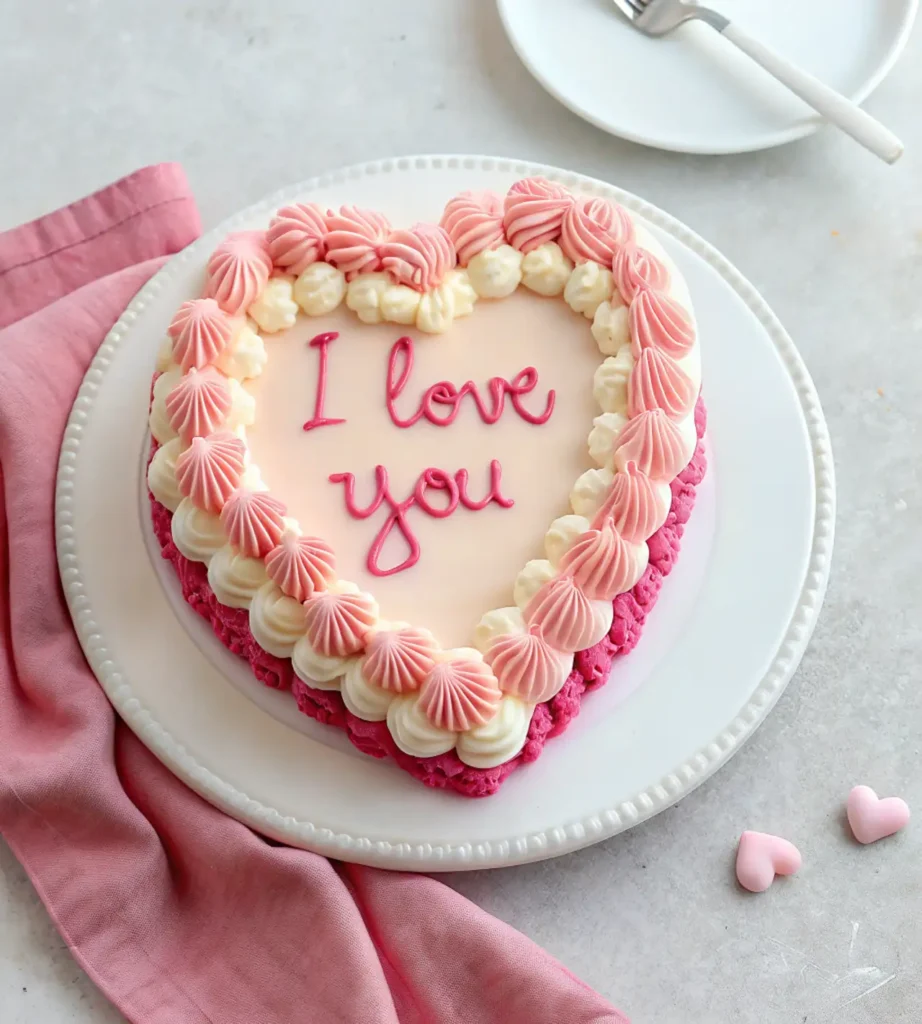
Significance of Heart-Shaped Cakes in Celebrations
The heart shape has long been associated with love, affection, and celebration. Whether it’s Valentine’s Day, anniversaries, or weddings, heart-shaped cakes have a timeless appeal. Their symbolism makes them perfect for special occasions that honor love and deep connections.
Historically, heart-shaped desserts were often made for romantic celebrations. As cake decorating techniques evolved, bakers began embellishing them with buttercream ruffles, pearls, and piped roses, giving them that iconic vintage aesthetic.
Today, creating a Vintage Heart Cake is more than just baking—it’s about crafting a piece of edible art that carries meaning and sentiment. And the best part? You don’t need to be a professional baker to achieve this look. With the right tools, techniques, and a little creativity, you can make a stunning Vintage Heart Cake right at home!
Ready to dive into the history behind these charming cakes? In the next section, we’ll explore the origins of Vintage Heart Cakes and how their decorating styles have evolved over the years. Stay tuned!
Historical Background of Vintage Heart Cakes
Origins of Heart-Shaped Confections
The Vintage Heart Cake has a rich history, dating back centuries. While heart-shaped treats have been around for a long time, cakes in this shape became more popular in the 19th and 20th centuries. Early bakers created them for romantic celebrations, engagements, and weddings, often decorating them with simple icing and sugar flowers.
As baking techniques advanced, so did the art of cake decoration. By the mid-1900s, heart-shaped cakes became a staple for special occasions. Bakeries across Europe and the U.S. started offering them, often covered in buttercream swirls, intricate piping, and delicate pastel colors. This era marked the beginning of the vintage cake trend, which continues to inspire modern bakers today.
Evolution of Cake Decorating Styles Over the Decades
Decorating styles have changed dramatically over time. In the 1950s and 1960s, cakes were often ornate, colorful, and full of texture. The Lambeth method, a classic English piping technique, became extremely popular. This style is known for its layered, over-piped buttercream decorations, giving cakes an elegant, luxurious appearance.
By the 1970s and 1980s, home baking became more common, and many people experimented with pastel-colored cakes, edible pearls, and hand-piped flowers. Heart-shaped cakes became a Valentine’s Day favorite, symbolizing love and romance.
Today, the Vintage Heart Cake is making a huge comeback, thanks to its nostalgic charm and aesthetic appeal. Many bakers are bringing back the intricate piping techniques of past decades, blending them with modern flavors and ingredients. Whether for birthdays, anniversaries, or just because, these cakes remain a beloved choice for celebrations.
Essential Tools and Ingredients for Crafting a Vintage Heart Cake
Baking Equipment Needed
To make a perfect Vintage Heart Cake, having the right tools is essential. While some bakers prefer heart-shaped cake pans, you can also bake a round cake and carve it into a heart. Here’s what you’ll need:
- Heart-shaped cake pan (or round and square pans to cut a heart)
- Offset spatula for smooth icing application
- Piping bags and tips (especially star and round tips for vintage designs)
- Cake turntable for even decorating
- Bench scraper to get smooth buttercream edges
- Food coloring gels to achieve soft, pastel shades
Key Ingredients for the Perfect Cake Base
Table: Best Cake Flavors & Frosting Combinations for a Vintage Heart Cak
| Cake Flavor | Taste Profile | Best Frosting Pairing | Perfect for |
|---|---|---|---|
| Vanilla Sponge | Light, fluffy, and classic | Vanilla Buttercream, Swiss Meringue | All occasions, beginner-friendly |
| Red Velvet | Mild cocoa, soft texture | Cream Cheese Frosting, White Buttercream | Romantic events, Valentine’s Day |
| Chocolate Fudge | Rich, deep cocoa flavor | Chocolate Ganache, Mocha Buttercream | Chocolate lovers, birthdays |
| Strawberry Cake | Fruity, naturally sweet | Strawberry Buttercream, Whipped Cream | Spring celebrations, baby showers |
| Lemon Cake | Zesty, slightly tangy | Lemon Buttercream, Cream Cheese Frosting | Summer weddings, tea parties |
| Earl Grey Cake | Floral, delicate | Lavender Buttercream, Honey Frosting | Elegant vintage-themed events |
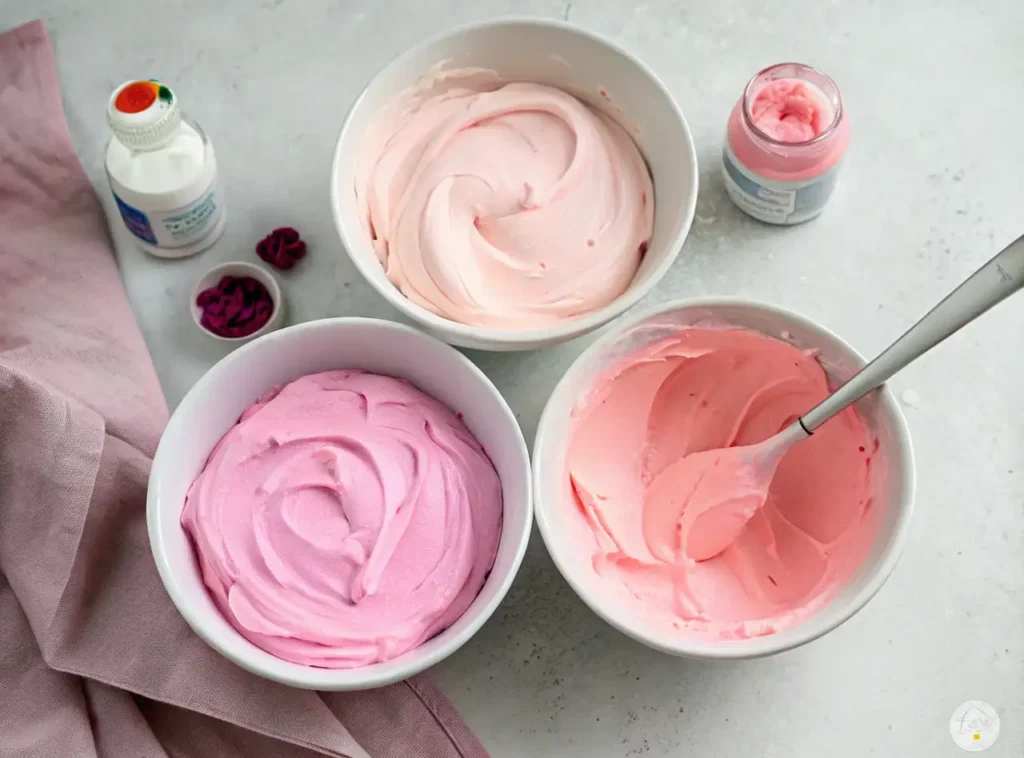
A Vintage Heart Cake isn’t just about looks—it should taste amazing too! Classic vintage cakes are known for their fluffy texture and rich flavors. Some popular cake bases include:
- Vanilla sponge – Light, airy, and perfect for layering
- Red velvet – A deep red cake with a subtle cocoa flavor, great for romantic occasions
- Chocolate cake – A rich, moist option for chocolate lovers
- Strawberry cake – Sweet, fruity, and pairs well with buttercream
For the frosting, buttercream is a must. Traditional vintage cakes use:
- American buttercream – Sweet and sturdy, ideal for piping
- Swiss meringue buttercream – Silky and less sweet, but holds intricate designs well
Specialty Tools for Vintage Piping Techniques
A Vintage Heart Cake isn’t complete without stunning decorations. To get those retro buttercream ruffles and swirls, you’ll need:
- Piping tips: Star tips (1M, 2D) for rosettes, round tips for pearls
- Couplers: To switch piping tips easily
- Fondant decorations: Optional, but great for adding small bows, pearls, or flowers
Having these tools and ingredients on hand will make the decorating process much easier. Up next, we’ll dive into the step-by-step guide for baking and assembling a perfect Vintage Heart Cake.
Step-by-Step Guide to Baking a Vintage Heart Cake
Preparing the Heart-Shaped Cake Pan
First, gather all your tools and ingredients. Preheat your oven to the temperature specified in your recipe. If you’re using a heart-shaped pan, grease it thoroughly with butter or non-stick spray to prevent sticking. For added assurance, line the bottom with parchment paper cut to fit the shape. This step ensures your Vintage Heart Cake releases smoothly after baking.
If you don’t have a heart-shaped pan, don’t worry! You can bake a round and a square cake of the same size. Once baked and cooled, cut the round cake in half. Place the square cake like a diamond, and position the two semicircles on the top sides to form a heart shape. This method is a clever workaround to achieve the desired shape.
Mixing and Baking the Cake Batter
In a large mixing bowl, cream together softened butter and sugar until light and fluffy. Add eggs one at a time, mixing well after each addition. Incorporate vanilla extract for flavor. In a separate bowl, whisk together your dry ingredients: flour, baking powder, and a pinch of salt.
Gradually add the dry ingredients to the wet mixture, alternating with milk, beginning and ending with the dry ingredients. This method ensures a smooth batter. Pour the batter into your prepared pan(s), smoothing the top with an offset spatula.
Place the pan in the preheated oven and bake according to your recipe’s instructions, usually until a toothpick inserted into the center comes out clean. Once done, remove the cake from the oven and let it cool in the pan for about 10 minutes. Then, transfer it to a wire rack to cool completely before decorating.
Leveling and Preparing the Cake Layers
Once your cake has cooled, it’s time to level it. Using a serrated knife or a cake leveler, trim the top of the cake to create a flat surface. This step is crucial for even layering and stability.
If you plan to have multiple layers, carefully slice the cake horizontally to create even layers. Place a dollop of buttercream on your cake board or serving plate to anchor the bottom layer. Spread a generous amount of buttercream or your chosen filling between each layer, ensuring it’s evenly distributed.
After stacking the layers, apply a thin coat of buttercream over the entire cake. This “crumb coat” seals in any loose crumbs and provides a smooth base for the final layer of frosting. Chill the cake in the refrigerator for about 15-20 minutes to set the crumb coat before proceeding to the final decoration.
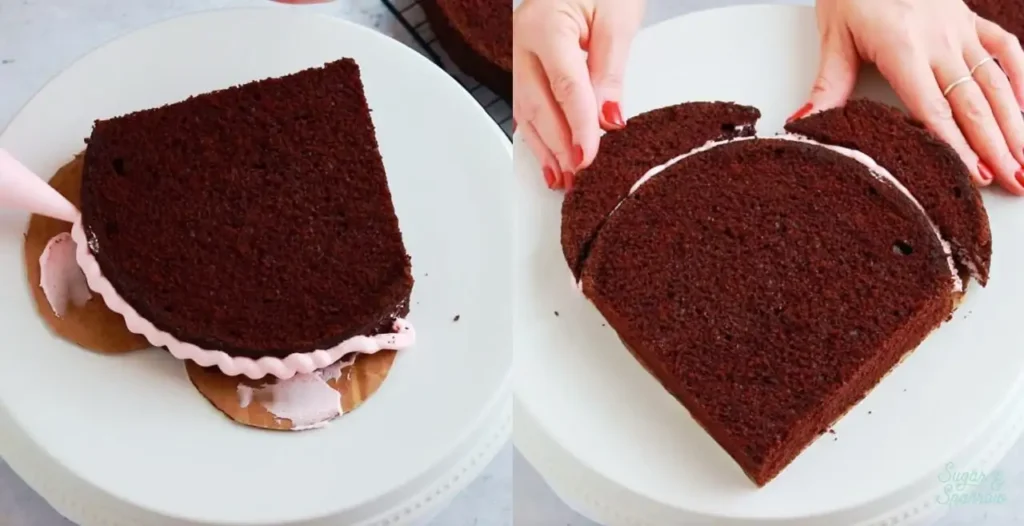
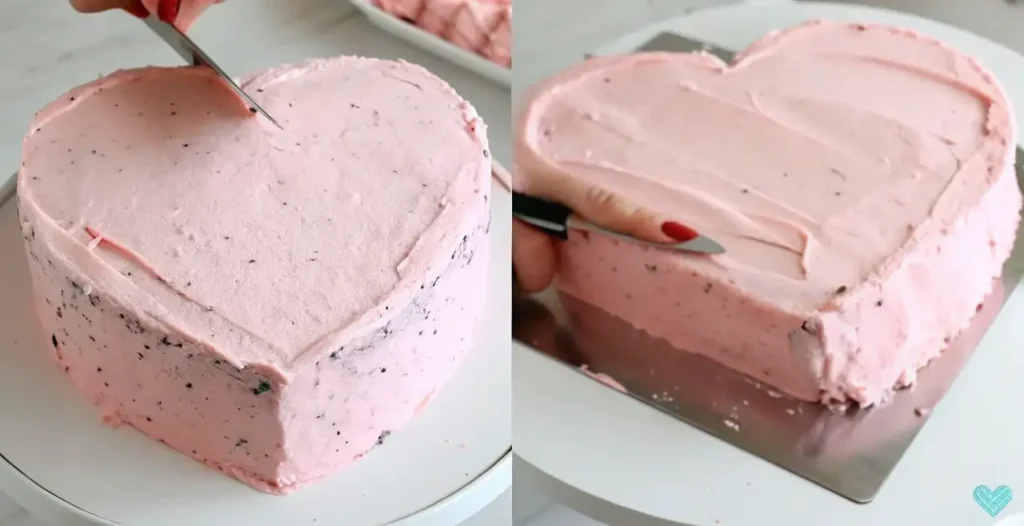
Mastering Vintage Decoration Techniques
Overview of Vintage Piping Styles
Decorating a Vintage Heart Cake involves classic piping techniques that give it that nostalgic charm. The Lambeth method, for instance, is known for its intricate and ornate designs, featuring layers of over-piped scrollwork, shells, and garlands. This style adds depth and elegance to your cake.
Another popular technique is the basketweave, which creates a woven pattern resembling a basket. This method adds texture and a rustic feel to the cake. Additionally, rosettes and swirls are simple yet effective designs that exude vintage appeal.
Creating Intricate Buttercream Ruffles and Borders
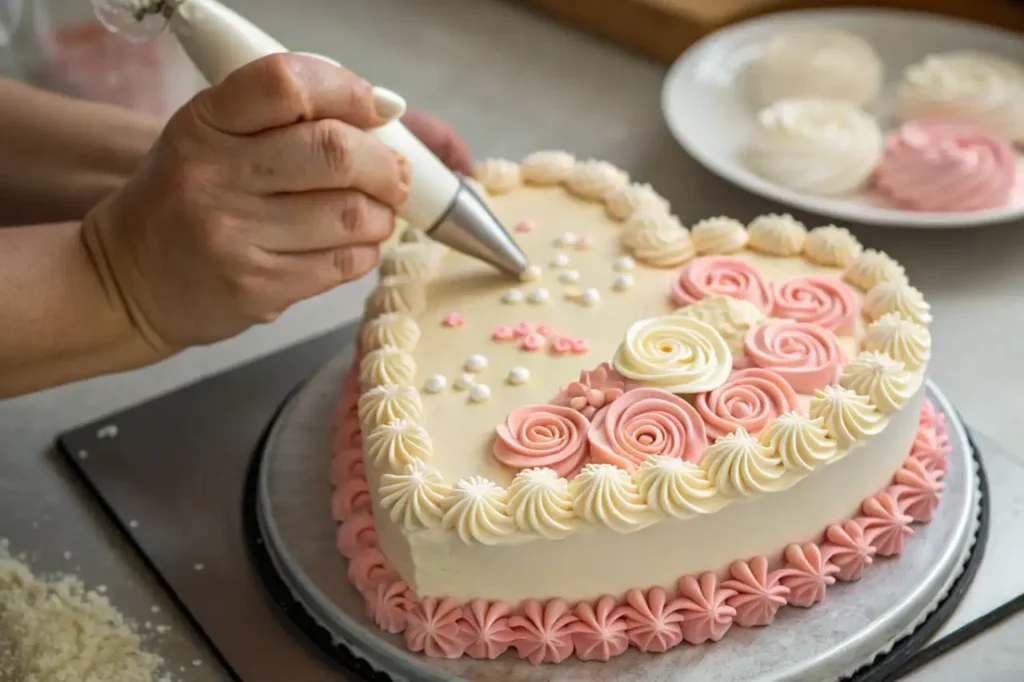
To achieve those signature buttercream ruffles, fill a piping bag fitted with a petal tip (like a Wilton 104) with buttercream. Hold the bag at a 45-degree angle to the cake surface, with the wider end of the tip touching the cake. Apply steady pressure as you move the tip in a gentle wave pattern, creating ruffles around the edges of the cake.
For borders, a star tip (such as a Wilton 1M) works beautifully. Pipe shells or pearls along the base and top edges of the cake to frame it elegantly. Over-piping these elements adds to the vintage aesthetic, giving the cake a rich, layered look.
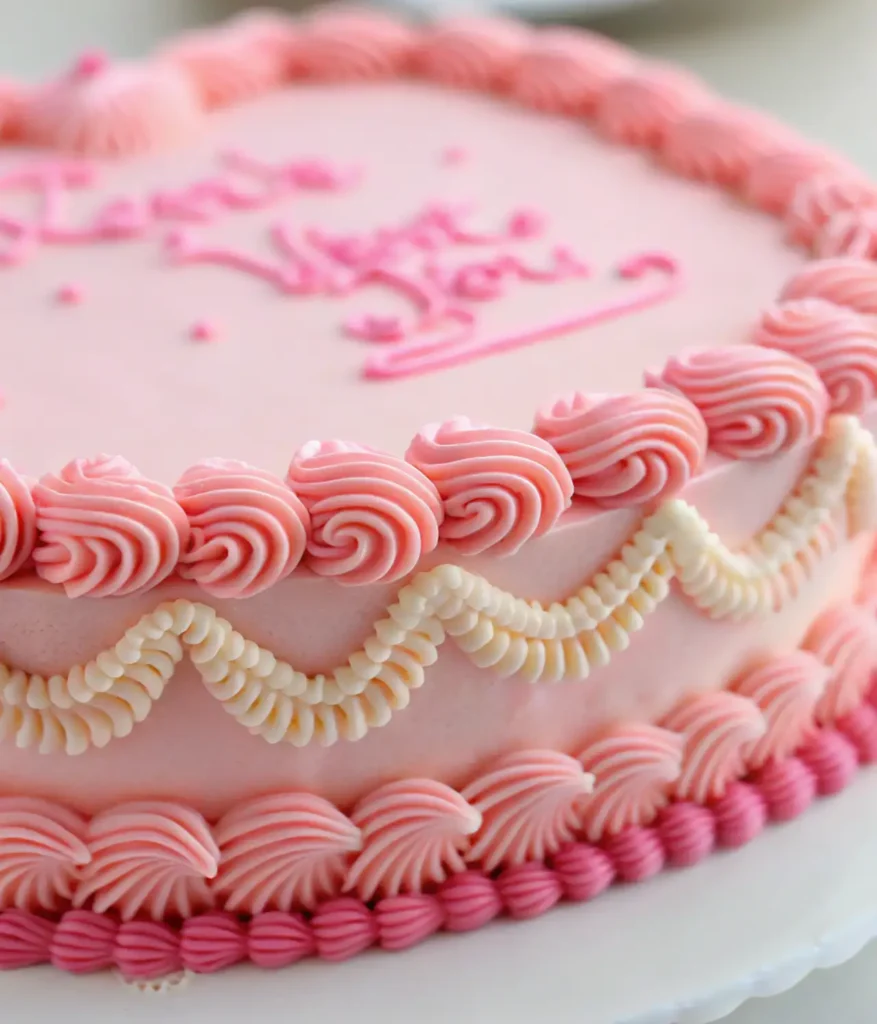
Incorporating Decorative Elements: Cherries, Bows, and More
Enhance the vintage charm by adding decorative elements. Maraschino cherries placed strategically on the cake add a pop of color and a retro feel. Fondant bows, edible pearls, and sugar flowers can also be used to embellish the design.
Consider using pastel-colored buttercream for a soft, vintage palette. Light pinks, blues, and creams evoke a nostalgic vibe. Edible glitter or luster dust can add a subtle shimmer, elevating the cake’s elegance.
Remember, the key to a stunning Vintage Heart Cake lies in the details. Take your time with the piping, and don’t be afraid to layer different techniques and decorations to achieve a rich, ornate appearance. With practice and patience, you’ll master the art of vintage cake decoration, creating a centerpiece that’s as delightful to look at as it is to eat.
Flavor Variations and Modern Twists
Popular Flavor Combinations for Vintage Heart Cakes
A Vintage Heart Cake isn’t just about its beautiful design—it should taste amazing too! Traditional flavors often reflect the classic, old-fashioned charm of vintage cakes. Some of the most loved flavors include:
- Vanilla sponge cake – Light, fluffy, and perfect with buttercream.
- Red velvet cake – A deep red cake with a mild chocolate flavor, paired with cream cheese frosting.
- Chocolate fudge cake – Rich and moist, ideal for chocolate lovers.
- Strawberry cake – Soft, fruity, and beautifully pink for a vintage touch.
- Lemon cake – Light and zesty, adding a refreshing contrast to sweet buttercream.
These flavors create the perfect base for vintage-style decoration while maintaining a delicious, nostalgic taste.
Incorporating Contemporary Flavors While Maintaining Vintage Aesthetics
While vintage cakes often stick to classic flavors, adding a modern twist can make your Vintage Heart Cake even more exciting! Consider infusing the batter or frosting with:
- Earl Grey or lavender for a floral touch.
- Salted caramel for a sweet and salty contrast.
- Raspberry or passionfruit for a tart, fruity burst.
- Espresso or mocha for a deeper, rich flavor.
To keep the vintage aesthetic, make sure to use soft pastel buttercream, intricate piping, and traditional decorations like maraschino cherries, pearls, and rosettes. This way, you get the best of both worlds—a modern taste with a timeless look!
Serving and Presentation Tips
Selecting the Right Cake Stand and Accessories
Presentation plays a huge role in showcasing a Vintage Heart Cake. Choosing the right cake stand can elevate the design and make it a stunning centerpiece. Here are some great options:
- Glass or crystal cake stands – These add an elegant, classic touch.
- Pastel-colored cake plates – Perfect for a soft, vintage look.
- Ornate, lace-patterned trays – Great for a rustic or antique feel.
You can also add decorative cake toppers, like mini bows, piped lettering, or edible gold leaf, to enhance the cake’s charm.
Tips for Cutting and Serving Heart-Shaped Cakes
Cutting a heart-shaped cake can be tricky, but using the right method makes it easier. Follow these steps for clean, even slices:
- Start by cutting a vertical line down the middle of the cake.
- Then, cut horizontal slices across each half, creating even portions.
- Use a sharp, non-serrated knife for smooth edges.
- Wipe the knife with a warm, damp cloth between slices for cleaner cuts.
To serve, pair the cake with a cup of tea, coffee, or a glass of milk for a truly nostalgic experience. Whether it’s for a birthday, wedding, or afternoon tea, a Vintage Heart Cake is sure to impress!
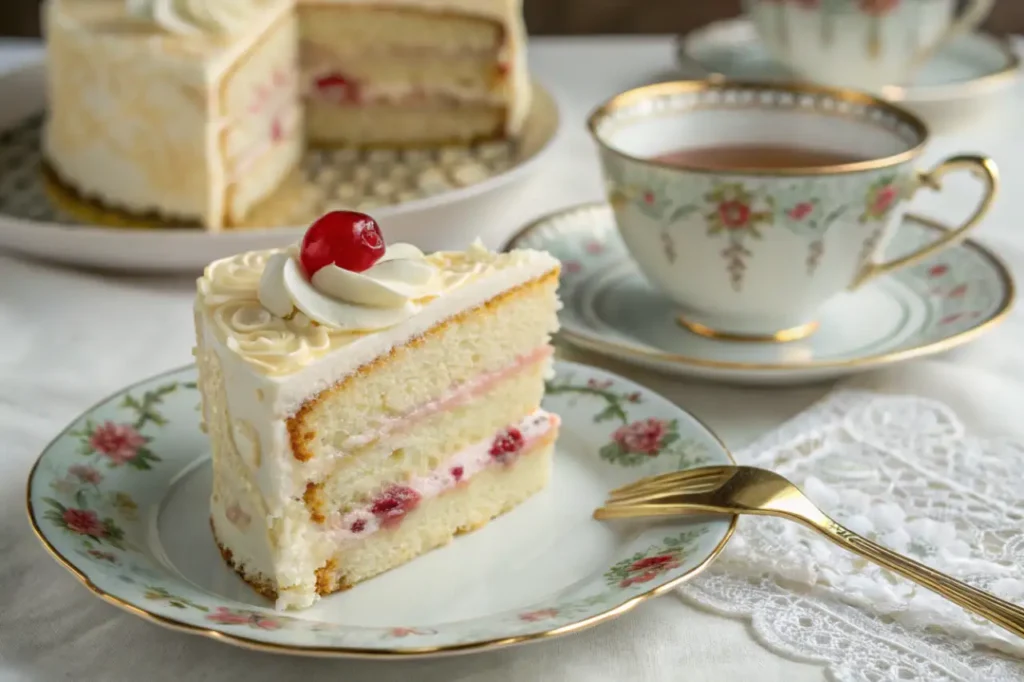
How to Store Vintage Heart Cakes
A Vintage Heart Cake isn’t just about looks—it’s also about keeping it fresh and delicious for as long as possible. Proper storage ensures that the cake stays moist, and the intricate buttercream decorations remain intact.
Short-Term Storage (1-2 Days)
If you plan to serve the cake within a day or two, it’s best to store it at room temperature in a cake box or under a cake dome. This prevents the buttercream from drying out while keeping the cake soft and flavorful. However, if your home is warm or humid, consider refrigerating it.
Refrigerating for Longer Freshness (Up to 5 Days)
For longer storage, place the cake in an airtight container and refrigerate it. Before serving, let it sit at room temperature for 30 minutes to soften the buttercream and enhance the flavors.
Freezing for Extended Storage (Up to 3 Months)
Want to save your Vintage Heart Cake for a special occasion? Wrap it tightly in plastic wrap, then cover it with aluminum foil before freezing. When ready to eat, thaw it overnight in the fridge, then bring it to room temperature before serving.
By following these steps, you can enjoy your beautifully decorated cake without worrying about it losing its texture or taste!
FAQs
Vintage-style cakes are often referred to as “Lambeth Cakes”, named after the Lambeth Method, a classic English piping technique. These cakes are known for their intricate buttercream details, scroll piping, ruffles, and over-the-top decorations. Other names include Retro Cakes, Classic Piped Cakes, and Nostalgic Cakes. They became popular in the 1950s and 1960s and are now making a comeback due to their elegant and artistic buttercream designs.
To cut a Vintage Heart Cake neatly, follow these steps:
Make a vertical cut down the center of the cake, splitting it into two equal halves.
Cut each half into horizontal slices, starting from the top rounded edges down to the bottom point.
Use a sharp, non-serrated knife to get clean cuts, and wipe the blade with a warm cloth between slices.
For serving, use a cake lifter or spatula to keep each slice intact.
This method ensures even portions while preserving the cake’s heart shape.
For a traditional Vintage Heart Cake, use a 9-inch heart-shaped cake pan. If you don’t have one, you can bake in two 8-inch round cakes and one 8-inch square cake, then cut and assemble them into a heart shape.
For multi-layer cakes, consider using 6-inch or 7-inch heart pans to create a taller cake with more decorative piping space. Always grease the pan and line it with parchment paper for easy release.
Conclusion: Embracing the Art of Vintage Cake Making
The Joy of Crafting and Sharing Timeless Confections
A Vintage Heart Cake is more than just a dessert—it’s a piece of edible art that brings nostalgia, warmth, and beauty to any celebration. From its intricate piping to its romantic shape, this cake is a true showstopper. Whether you’re baking for a birthday, wedding, or Valentine’s Day, mastering the art of vintage cake-making allows you to create something unique and unforgettable.
By choosing the right tools, ingredients, and decorating techniques, you can achieve that classic vintage aesthetic with ease. Plus, with modern flavors and creative twists, you can make your Vintage Heart Cake taste just as amazing as it looks!
Now that you’ve learned the step-by-step process, it’s time to bring your baking skills to life. Try experimenting with different piping styles, flavors, and colors to create a personalized version of this beloved cake. And most importantly—have fun with the process!
Try Making Your Own Vintage Heart Cake!
Now that you’ve learned everything about making a Vintage Heart Cake, it’s time to bring your creativity to life! Whether you stick to classic pastel colors and buttercream ruffles or give it a modern twist, this cake is sure to impress.
We’d love to see your creations! Try this recipe and share your Vintage Heart Cake photos in the comments or tag us on social media. Have a favorite flavor or decorating tip? Let us know—we’re always excited to hear from fellow bakers!

